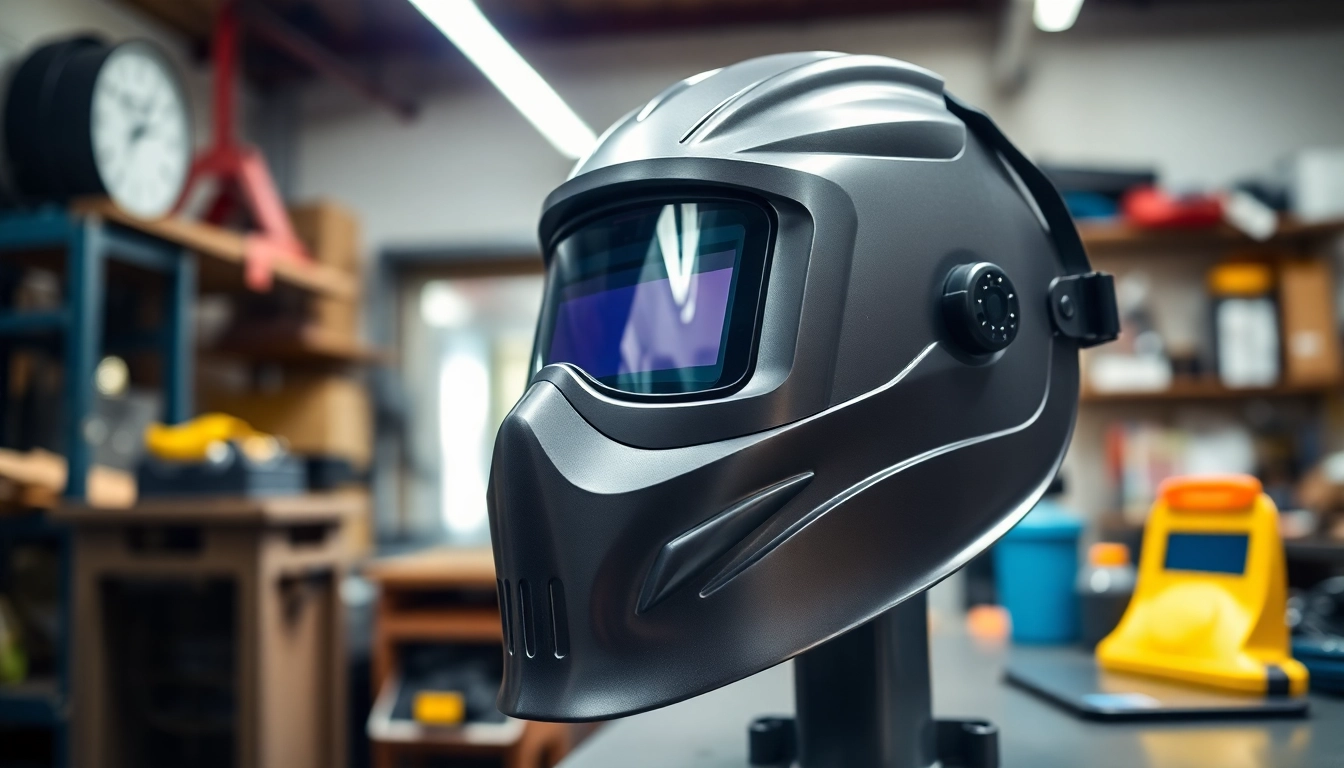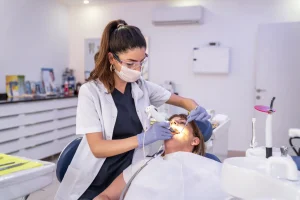Essential Welding Mask Features and Benefits for Every Welder
Understanding Welding Masks: Types and Functions
1. Overview of Welding Mask Types
Welding is a crucial process in numerous industries, from construction to manufacturing, and a quality welding mask is essential for safety and efficiency. Welding masks, also known as welding helmets or hoods, are designed to protect the welder’s face, eyes, and neck from the intense brightness and heat generated during welding processes. Available in various styles, welding masks are typically classified into three main types: auto-darkening, passive (fixed shade), and pancake welding hoods.
Auto-Darkening Welding Masks
Auto-darkening welding masks are designed with a light-sensor technology that detects the intensity of the arc and adjusts the lens shade automatically within milliseconds. This feature allows welders to work more comfortably without having to lift their masks each time they stop welding, providing a clearer view of the weld pool before and after striking an arc.
Passive Welding Masks
Passive welding masks have a fixed shade lens that doesn’t change tint, typically available in shades 10 to 14. These helmets offer reliable protection but require the welder to raise and lower the helmet manually, which can interrupt workflow and lead to fatigue during long sessions.
Pancake Welding Hoods
Pancake welding hoods provide an ultra-low profile design that’s lightweight and provides superior visibility. These hoods are most favored for their comfort, especially during longer welds or when working in tight spaces. While they might lack some of the modern features of auto-darkening models, their simplicity and effectiveness make them a solid choice for many welders.
2. Key Functions of a Welding Mask
The primary function of a welding mask is to protect the welder from various hazards associated with welding. These hazards include:
- Radiation: UV and IR radiation can cause severe eye injuries known as “arc eye” or “welder’s flash.” A quality mask significantly reduces exposure.
- Heat: High temperatures can cause severe burns. Helmets are designed to withstand intense heat and protect the face and neck.
- Flying Sparks: During welding, sparks may fly unpredictably. A welding mask provides a physical barrier to minimize any injury from hot metal fragments.
- Dust and Debris: Protective masks guard against inhaling airborne contaminants present in welding environments, enhancing safety and comfort.
3. Choosing the Right Welding Mask for Your Needs
Choosing the right welding mask involves considering several factors:
- Type of Welding: Different welding techniques (MIG, TIG, Stick) may demand different levels of protection. Auto-darkening masks might be ideal for versatile needs, while passive masks could suffice for simple tasks.
- Frequency of Use: For professionals or regular users, investing in a high-quality, auto-darkening mask can be essential. Casual users may prefer budget-friendly passive masks.
- Work Environment: Hot environments or those with certain particulates may require specific safety features like enhanced ventilation or specific lens coatings.
Key Features to Look for in a Welding Mask
1. Lens Options: Auto-Darkening vs. Passive
When evaluating lens options, consider the following:
- Shade Adjustment: Auto-darkening lenses provide various shades that can be adjusted automatically, while passive lenses are stationary. For flexibility during tasks, auto-darkening features are preferred.
- Switching Speed: The speed at which the lens darkens affects user experience; for best results, look for lenses that transition in less than 1/1000th of a second.
- Viewing Area: A larger viewing area can enhance visibility and ease of monitoring the workpiece. However, ensure that the helmet’s design provides adequate protection around the sides and bottom.
2. Safety Standards and Compliance
It’s imperative to choose welding masks that comply with established safety standards such as ANSI Z87.1 or the Canadian CSA Z94.3. These standards ensure the product has been tested and meets safety requirements in terms of impact resistance and optical clarity. Masks that feature additional certifications offer greater assurance regarding their performance in hazardous conditions.
3. Comfort and Fit Adjustments
Comfort is crucial, particularly during extended periods of use. Features to consider include:
- Weight: Lighter helmets reduce neck strain, especially for long tasks.
- Adjustable Headgear: Ensure it can be customized for a secure and comfortable fit.
- Ventilation: Well-ventilated masks prevent heat build-up inside the helmet, increasing comfort during operation.
Benefits of Using a Quality Welding Mask
1. Eye and Face Protection
The most significant benefit of a quality welding mask is enhanced protection for the face and eyes. Investing in a helmet with a reliable shielding mechanism is crucial to avoid short-term and long-term injuries caused by harmful rays, heat, or irritants produced during welding operations.
2. Enhanced Visibility for Precision Work
Advanced technologies in auto-darkening helmets provide better visibility with minimal distortion. This clarity helps welders see their work clearly, smoothing the transition from preparing to executing a weld, ultimately contributing to better results.
3. Long-Term Investment and Cost Savings
While quality welding masks may have a higher upfront cost, their durability and comprehensive protection can save money over time. A helmet that lasts longer reduces replacement needs and enhances productivity by minimizing downtime due to injuries or equipment failure.
Maintenance and Care for Your Welding Mask
1. Regular Cleaning Techniques
To maintain optimal performance, regular cleaning is vital. Here are some effective cleaning techniques:
- Lens Care: Use a soft cloth and gentle cleaner designed for optics to avoid scratches. Avoid abrasives or sloshing water on the inside of auto-darkening helmets.
- Outer Shell Cleaning: Wipe down the exterior with a damp cloth to remove dust and grime. This will ensure that the helmet remains lightweight and easy to handle.
2. Storage Solutions for Longevity
Proper storage can extend the lifespan of your welding mask:
- Use a Protective Case: Store the helmet in a dedicated, padded case to prevent damage when not in use.
- Avoid Direct Sunlight: Store in a shaded area to prevent UV damage on non-glass components.
3. When to Replace Your Welding Mask
Regular how-to assessments will identify when a mask is no longer suitable for use:
- Visible Damage: Any noticeable cracks, breaks, or other deformities in the helmet should spur an immediate replacement.
- Lens Efficacy: If auto-darkening features are slow or non-responsive, it’s time for a new mask.
Popular Brands and Models of Welding Masks
1. Overview of Leading Brands
As the welding mask market continues to evolve, several brands have distinguished themselves by delivering high-quality, reliable products. Brands like Miller Electric, Lincoln Electric, ESAB, and Jackson Safety are commonly recognized for their commitment to innovation, safety, and user satisfaction.
2. Top-Rated Welding Masks of the Year
Among the most praised models in recent reviews include the Lincoln Viking 3350, known for its expansive viewing area and advanced auto-darkening technology, and the Miller Digital Infinity, which offers exceptional clarity and responsiveness.
3. Customer Feedback and Recommendations
Customers seek comfort and functionality when using welding masks. Reviews often highlight aspects such as weight, visibility, and overall comfort. Many users recommend trying on a mask before purchase to find the best fit, ensuring the balance between comfort and performance remains optimal. Feedback consistently emphasizes that quality matters, and investing in a trusted brand can pay dividends in safety and performance.














Post Comment